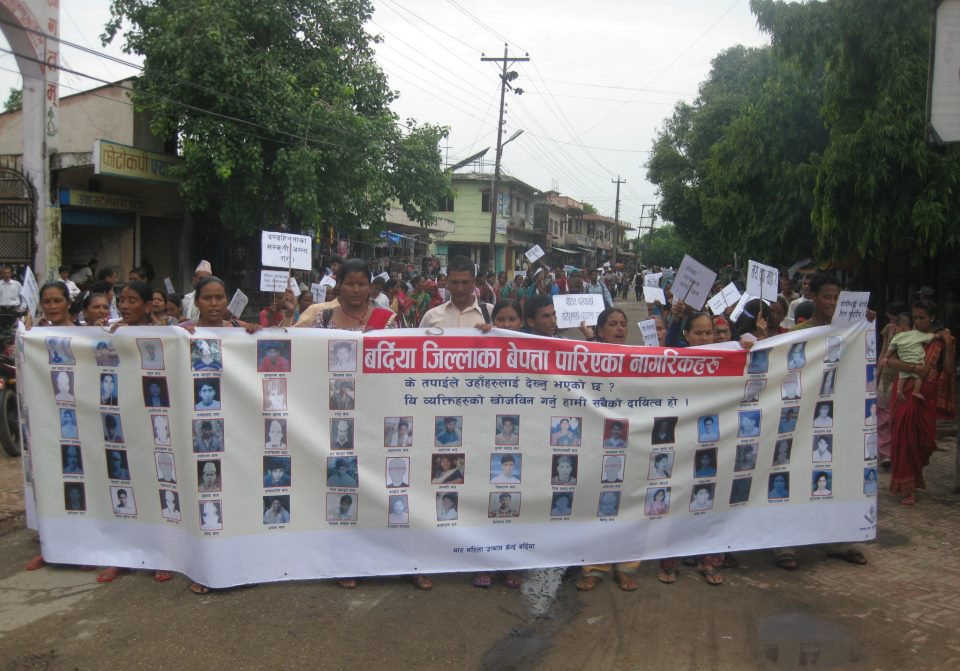An opinion piece by Ben Schonveld, Director of ICJ’s South Asia Programme, and Govinda Bandi, an expert in constitutional and international law.
In a landmark decision last week, Nepal’s Supreme Court again demonstrated why it has been the most important bastion of hope for human rights in the country.
The ruling of 2 January struck down an executive Ordinance that represented an attempt by the country’s politicians to institutionalize impunity for the serious human rights violations and crimes of the past two decades.
It also laid down the gauntlet for the country’s political classes: political expediency cannot trump justice and accountability.
The Supreme Court’s ruling should put an end to much of the political argument around reconciliation and impunity.
It recognizes that reconciliation is an important goal in Nepal’s transitional process.
But the ruling also underlines that reconciliation cannot be built on a foundation of impunity for serious crimes and human rights abuses.
Allowing impunity for crimes under international law places certain categories of individuals above the law.
It leaves victims, who have been most affected by the conflict, with only a marginal role in the reconciliation process and in effect forces them to give up their right to justice, truth and reparation.
The case, Madhav Kumar Basnet v the Government of Nepal, was a response to a cynical effort by Nepali politicians to renege on their promise to the Nepali people to provide accountability and justice during the process of transition following the armed conflict.
Taking advantage of the absence of a legislature, an unlikely coalition of parties pushed for a sweeping amnesty from accountability under the misleading title of an Ordinance to establish a Commission of Inquiry on Disappeared Persons, Truth and Reconciliation.
Nepali civil society was not fooled by this benign title, and instead referred to the Ordinance as what it was: an amnesty for the perpetrators of years of human rights abuses.
Despite enormous criticism from a wide range of Nepali civil society and international human rights organizations, including the International Commission of Jurists, a slightly amended Ordinance received Presidential approval on 14 March 2013.
In response, civil society turned to the only branch of government that has sought to uphold the rights of Nepalis.
In a petition brought by a coalition of victims’ groups, with the assistance of the International Commission of Jurists, the Court was asked to consider the following: 1) whether or not the procedures and legal provisions of the Ordinance violated the Constitution, international human rights law and accepted principles of justice, and 2) if implemented in its present form, whether or not the Ordinance would achieve the goals of transitional justice.
In its landmark ruling of 2 January 2014, the Court held: 1) that the Ordinance was an obstacle to transitional justice and 2) that it violated Nepal’s Constitution, international human rights law and was contrary to previous rulings by the Supreme Courts and accepted principles of justice.
The Court also addressed the deficits of the Ordinance, including the absence of supporting legislation, and administrative reform that would be required for a credible transitional justice process.
On Amnesty
The Ordinance purported to give powers to the executive to grant amnesty for crimes under international law.
The Court held that such sweeping amnesties are an obstacle to truth, violate international law and the Court’s own prior decisions.
The court barred amnesty for such crimes, because they allow those suspected of criminal responsibility for crimes under international law, such as enforced disappearance, extrajudicial executions, torture and other ill-treatment, including rape and other sexual violence, to escape justice.
Statute of limitations
With regard to victims’ right to effective remedy, the Court rejected the Ordinance’s provision for a statute of limitations of 35 days for filing cases after the decision of the Commission.
The Court held that such a time limited statute of limitations “will create impunity” for international crimes.
Furthermore, the Court ruled that this limitation provided the Attorney General (AG) with excessive discretion, since any case that the AG was reluctant to pursue could be quashed simply through administrative delay.
On enforced disappearances
The Ordinance amalgamated what had been hitherto envisioned as two separate Commissions, one on truth and one designed to address the specific situation of enforced disappearances.
The Court ruled that a separate Commission of Disappearances was essential. The Court underlined that it had already ruled in the Rabindra Dhakal case that the Government must 1) criminalize the act of enforced disappearance as a continuous crime, not subject to the grant of amnesties; and 2) establish a separate commission, in accordance with international law and standards, to look into cases of enforced disappearance during the conflict.
Making transitional justice work
In addition to striking down sections of the Ordinance that contravened international law, the Constitution and prior rulings, the Court set forth a list of practical measures that need to be addressed to implement any future transitional justice mechanism. These measures include the following:
1) The need to legislate for the criminalization of human rights abuses constituting international crimes in Nepal. Currently enforced disappearance and torture are not criminal acts;
2) The Court also ruled that reparations to victims and their families for such abuses must be provided;
3) It ordered that a witness and victim protection program be established;
4) The Court ordered a vetting standard to ensure the impartiality of the Truth and Reconciliation Commission; and
5) The Court instructed the government to seek assistance from an ‘expert team’ to amend the Ordinance.
Truth as a replacement for justice
The International Commission of Jurists and many of its national and international partners have repeatedly called on Nepal’s past governments to ensure that legislation establishing transitional justice mechanisms – which must not replace judicial proceedings – conform to international standards.
Politicians in Nepal have repeatedly stressed the reverse. The Court has ruled that this debate too is at an end: transitional justice is a complement, not a replacement for criminal law.
Back to the drawing board
Nepal’s new government, once formed, now has to elaborate a substantial new legislation which will address the challenges of justice in transition.
The Court’s ruling has made it very clear that only laws that conform to international standards will be acceptable. And anything that falls below will inevitably be subject to legal challenge.
Yet successive governments have had a very poor record on implementing court judgments.
There remains a powerful resistance to ensuring accountability amongst many key political players, including the powerful military and many amongst the election victors.
This resistance reinforces a pattern of political interference with the criminal justice process and intersects with attempts to tackle corruption.
The extent of their influence can be seen in the weaknesses in the Ordinance that Nepal’s Supreme Court has now rejected.
Justice, truth and reparation for serious human rights violations were key demands of the people’s movement. They remain key demands of the Nepali people.
The Nepali Supreme Court’s decision is a landmark not just for Nepal but also for international law globally.
Is Nepal to be governed by the rule of law or continued political expediency? It is now over to the politicians.

